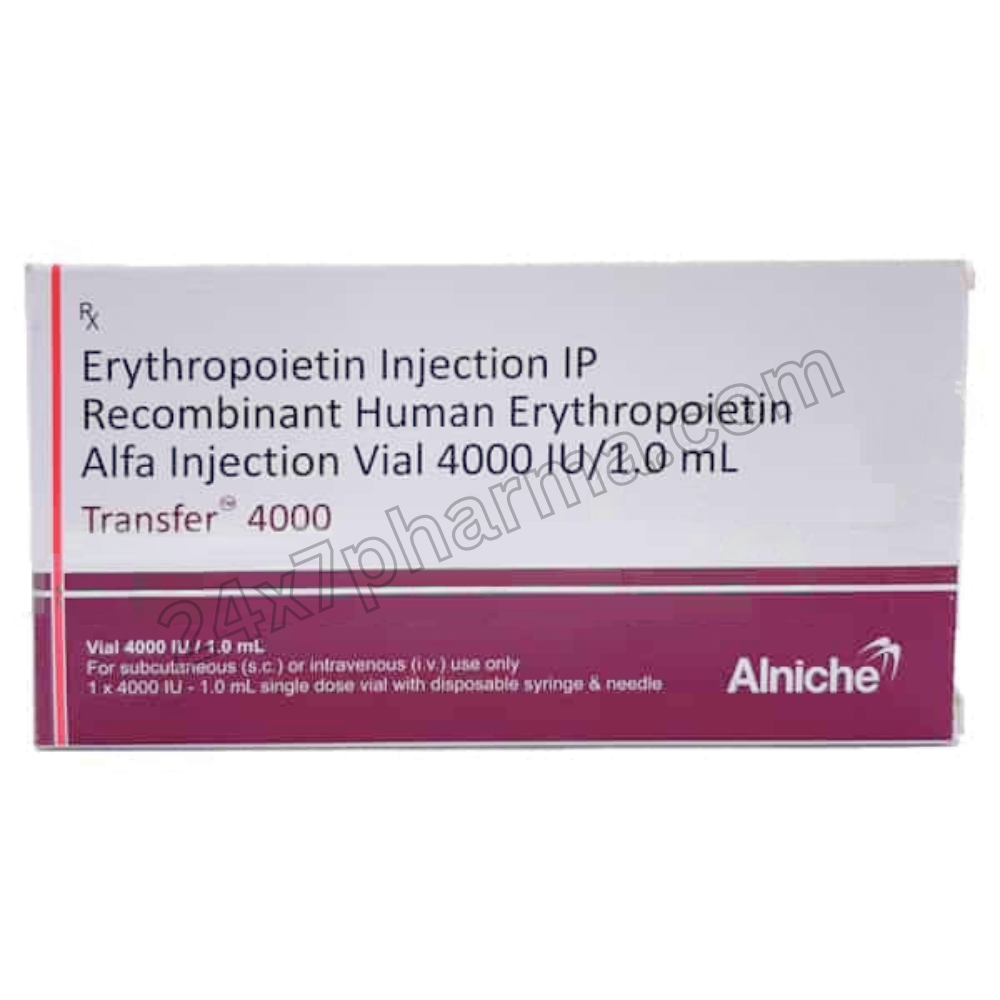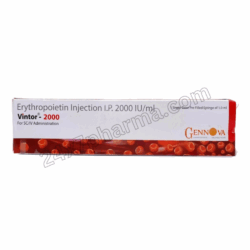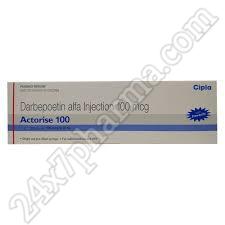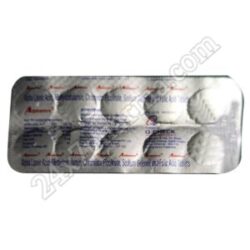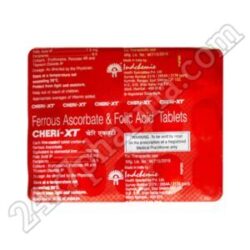What is the Transfer 4000 IU Injection?
The Transfer 4000 IU Injection contains erythropoietin, a hormone produced naturally in the kidneys. Its primary role in the body is to stimulate the bone marrow to produce red blood cells, which are essential for carrying oxygen throughout the body. In cases where the kidneys fail to produce enough erythropoietin—often due to kidney disease—or when red blood cell production is disrupted by chemotherapy or certain chronic conditions, this injection serves as a synthetic replacement to restore balance.
This injection is a highly specialized treatment, offering hope to patients struggling with severe anemia or fatigue caused by low red blood cell counts.
How Does Transfer 4000 IU Work?
When the body experiences low oxygen levels due to anemia, it signals a need for more red blood cells. Erythropoietin injection 4000 IU works by mimicking the natural hormone and stimulating the bone marrow to ramp up red blood cell production.
Transfer 4000 Injection Uses
The Transfer 4000 Injection is primarily prescribed for:
- Anemia in Chronic Kidney Disease (CKD): Patients with CKD often experience anemia because their damaged kidneys can no longer produce adequate erythropoietin. This injection helps correct that deficiency.
- Chemotherapy-Induced Anemia: Many cancer treatments, particularly chemotherapy, can suppress the bone marrow, reducing red blood cell production. The injection helps combat fatigue and weakness associated with this condition.
- Anemia in Premature Infants: In some cases, premature babies with underdeveloped kidneys benefit from erythropoietin therapy to ensure healthy red blood cell levels.
- Other Conditions: Certain chronic illnesses like HIV or rare bone marrow disorders may also require the erythropoietin 4000 IU injection as part of their treatment plans.
Benefits of the Transfer 4000 Injection
- Improved Energy Levels: By addressing anemia, patients often feel less fatigued and more active.
- Enhanced Quality of Life: Many patients report an improvement in their overall well-being after starting the treatment.
- Fewer Blood Transfusions: The injection can reduce the need for frequent blood transfusions, which carry risks such as infections and iron overload.
Other Dosages of Transfer 4000
Who Should Use Transfer 4000 IU?
While the erythropoietin injection 4000 IU offers many benefits, it’s essential to ensure that the treatment is appropriate for you. Patients who are most likely to benefit include:
- Those diagnosed with anemia due to CKD or cancer treatments.
- Patients undergoing dialysis.
- Individuals with documented low red blood cell counts confirmed by a healthcare provider.
Who Should Avoid Transfer 4000 Injection?
Not everyone is a candidate for this treatment. Avoid using the Transfer 4000 Injection if:
- You have uncontrolled high blood pressure.
- You are allergic to erythropoietin or any of the injection’s components.
- You have a history of certain types of blood clots or strokes, as the injection can increase this risk.
- Always consult a healthcare provider to determine if this injection is safe and suitable for you.
Side Effects of Transfer 4000 IU Injection
Like any medication, the erythropoietin injection 4000 IU may cause side effects. While many patients tolerate it well, some might experience:
- Headaches or dizziness.
- High blood pressure.
- Nausea or vomiting.
- Swelling at the injection site.
In rare cases, the injection can lead to blood clots, strokes, or severe allergic reactions. Inform your doctor about any unusual symptoms.
Precautions Before Using Transfer 4000 Injection
- Regular Monitoring: Patients should undergo frequent blood tests to monitor hemoglobin levels, ensuring they don’t rise too high, which could increase the risk of complications.
- Administer Proper Dosage: Always use the erythropoietin injection 4000 IU dosage as prescribed by a healthcare provider. Self-adjusting the dose can lead to serious health issues.
- Storage: Keep the injection in a refrigerator but do not freeze it. Make sure the injection comes to room temperature before use.
- Injection Technique: This is usually administered subcutaneously (under the skin) or intravenously by a healthcare professional.

